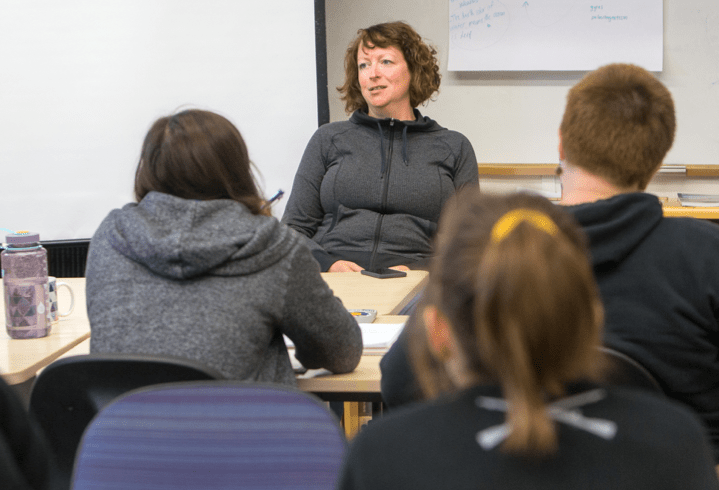
Too Small to See, Too Important to Ignore
How do we begin to understand the science that is part of a JOIDES Resolution expedition? There is a rich history of adventure and exploration connected to these voyages, and there is so much to learn about the work each group of research scientists does during a single expedition. Where to start? One place to start is to learn a bit more about the work of research scientists on the expedition. Over the next few weeks, we will share a bit about some of the science party members and their work.
Beth Orcutt is one of the co-chief scientists on the current transit/expedition. She is a geomicrobiologist, and she works at Bigelow Laboratory for Ocean Sciences in Maine. She explores life below the seafloor, studying environments in ocean floor sediment and oceanic crust. There is much to learn about how microscopic organisms exist in deep sea environments, and Dr. Orcutt’s work informs us all on how deep ocean floor microbes fit into the systems and cycles of Earth as a whole. This type of study can be called deep biosphere analysis.

Microbes are very much on research scientists radar. Microbes are tiny organisms, too small to see with our eyes and too important to ignore. To get an idea of how tiny microbes are, visualize a teaspoon full of water. You’d have about a million microbes hanging out in there. Microbes live all over Earth, in all kinds of environments and conditions. Research scientists on the JOIDES Resolution have the opportunity to study microbes in the ocean and in the ocean floor. Microbes in the ocean, or marine microbes, are major players in the ocean’s processes. They help make oxygen available, process greenhouse gases, serve as the basis for the food chain, and play a huge role in the flow of energy and nutrients. Marine microbes make up nimble and flexible communities, and scientists are looking to them as possible indicators of important changes in the ocean. So you see, microbes are an important part of life to study. Please see this page for more resources on microbes.
Microbes, because they are so tiny, are challenging to study. Also, there is so much to learn! Scientists around the world have been adding to our understanding of microbes. On this particular expedition, 385T, Dr. Orcutt will be attempting to gather fluid samples from hundreds of meters below the seafloor in deep oceanic crust at Holes 504B and 896A that were last visited in 2002. These sites have never been sampled for understanding life in the deep biosphere. She will compare samples taken from this expedition to samples taken from other sites that are similar in seafloor structure and that have been studied much more extensively. Why is this important? More information is needed on the type of microbial communities that exist in similar conditions. After years of existing in the undisturbed environment of Hole 896A, it will be interesting to see if the microbes are different from those found in other similar environments. Another goal of this expedition will be to learn more about the range of temperatures at which microbes can exist in the seafloor.
You can find out more about Dr. Orcutt and her ground-breaking science by going to her personal website at https://www.bigelow.org/about/people/borcutt.html. You can also follow her at @DeepMicrobe.